Table of Contents
Overview – Gastrointestinal Secretions
Gastrointestinal secretions play vital roles in digestion, protection, lubrication, immune defence, and regulation of acid–base balance. These secretions, derived from multiple organs along the GI tract, include water, enzymes, mucus, ions, and hormones. For medical students, understanding the source, composition, and control of these secretions is essential to interpret physiological functions and clinical disorders such as peptic ulcers, malabsorption, and diarrhoea.
Functions of GI Secretions
Proteins
- Digestive enzymes – e.g. amylase, pepsin
- Lubrication & protection – mucin
- Immune defence – salivary immunoglobulins
- Hormonal signalling – peptide hormones
Ions
- pH regulation – via bicarbonate and hydrogen ions
- Osmolality control – maintains luminal fluid balance (~300 mOsm)
- Electrochemical gradients – facilitate nutrient and ion transport
Water
- Solvent for enzymatic reactions
- Transport medium for nutrients and ions
- Maintains content consistency for digestion and excretion
Secretions by Site (Approx. Volumes)
| Site | Volume (mL) | Constituents |
|---|---|---|
| Mouth | 1500 | Saliva (amylase, mucin, immunoglobulins) |
| Stomach | 2500 | HCl, pepsinogen, intrinsic factor, mucus |
| Liver | 500 | Bile (bicarbonate, bile salts, cholesterol) |
| Pancreas | 1500 | Bicarbonate, amylase, lipase, proteases, nucleases |
| Intestines | 1000 | Intestinal juice, mucus, bicarbonate (Brunner’s glands) |
| Colon | ~0 | Mucus |
| Total + Oral Intake | 9000 mL | Includes ~2000 mL of drinking water |
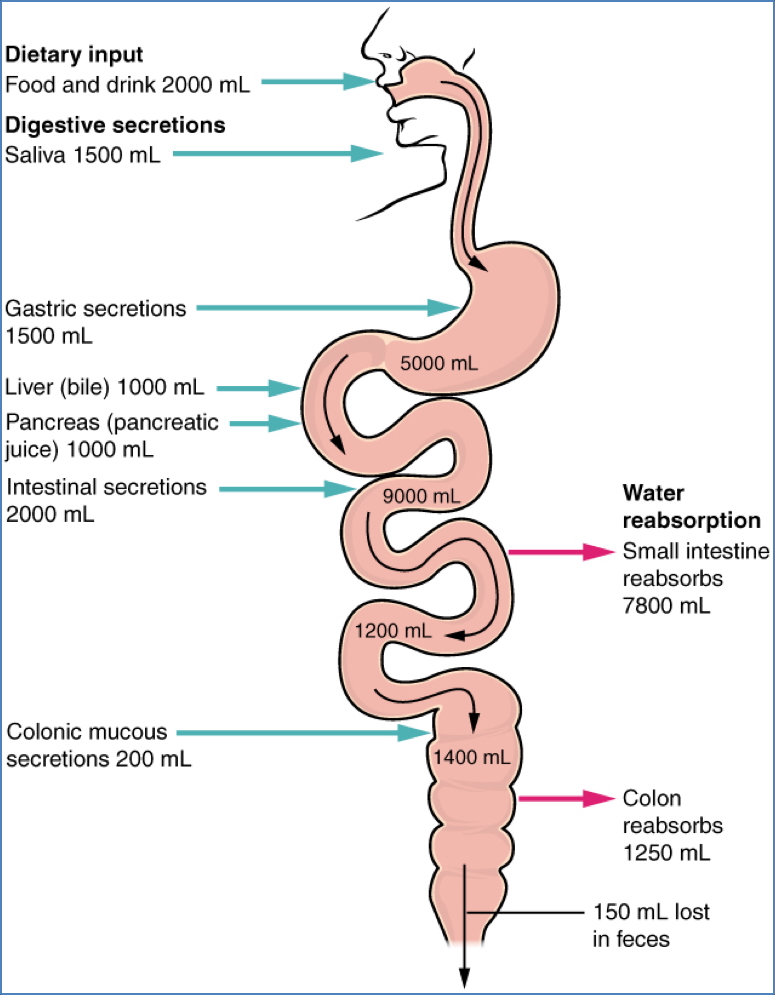
Key Secretory Structures
Salivary Glands
- Parotid: α-amylase, antimicrobial agents
- Submandibular: Mucin + α-amylase
- Sublingual: Mucin-rich secretion
Stomach
- Goblet Cells: Thick mucus with bicarbonate (protective)
- Mucous Neck Cells: Thin acidic mucus
- Parietal Cells:
- HCl
- Intrinsic factor (for vitamin B12 absorption)
- Chief Cells:
- Pepsinogen → activated to pepsin by HCl
- Enteroendocrine Cells:
- Secrete gastrin, histamine, serotonin
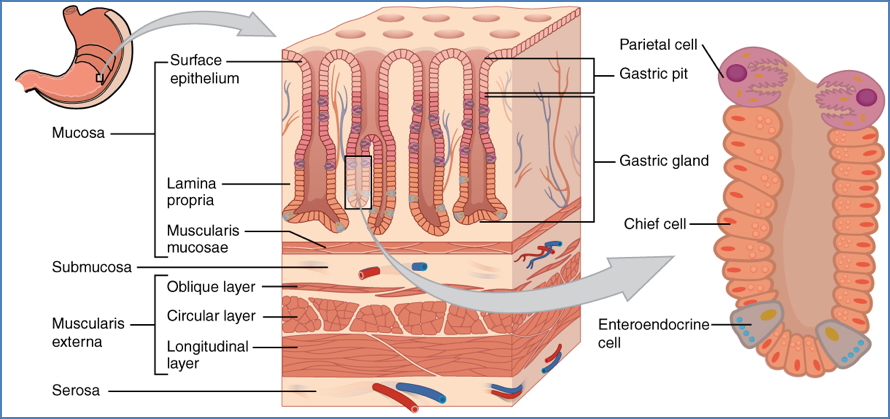
Duodenum – Brunner’s Glands
- Located proximal to hepatopancreatic sphincter
- Secrete alkaline mucus to buffer acidic chyme
Liver
- Produces bile: bile salts, phospholipids, emulsifiers
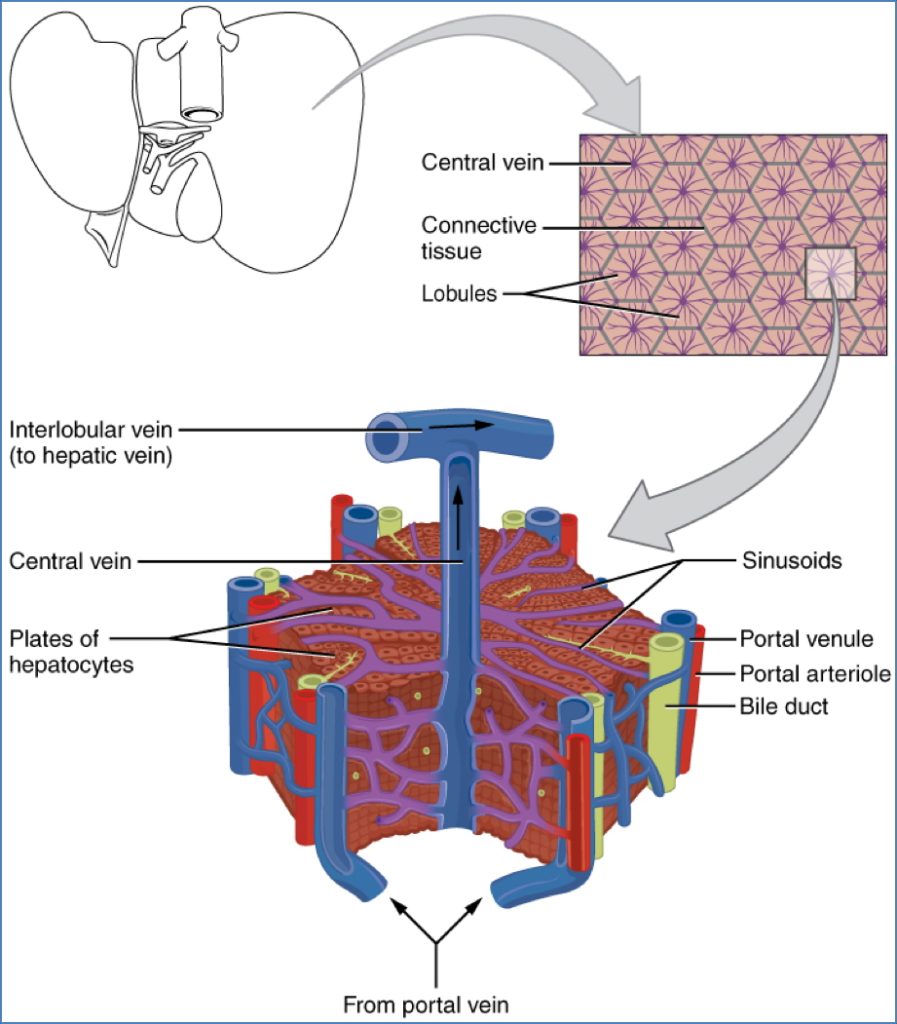
Pancreas (Exocrine)
- Bicarbonate: neutralises gastric acid
- Amylase: starch → maltose + glucose
- Lipase: fats → fatty acids + monoglycerides
- Proteases: protein breakdown
- Nucleases: DNA/RNA → nucleotides
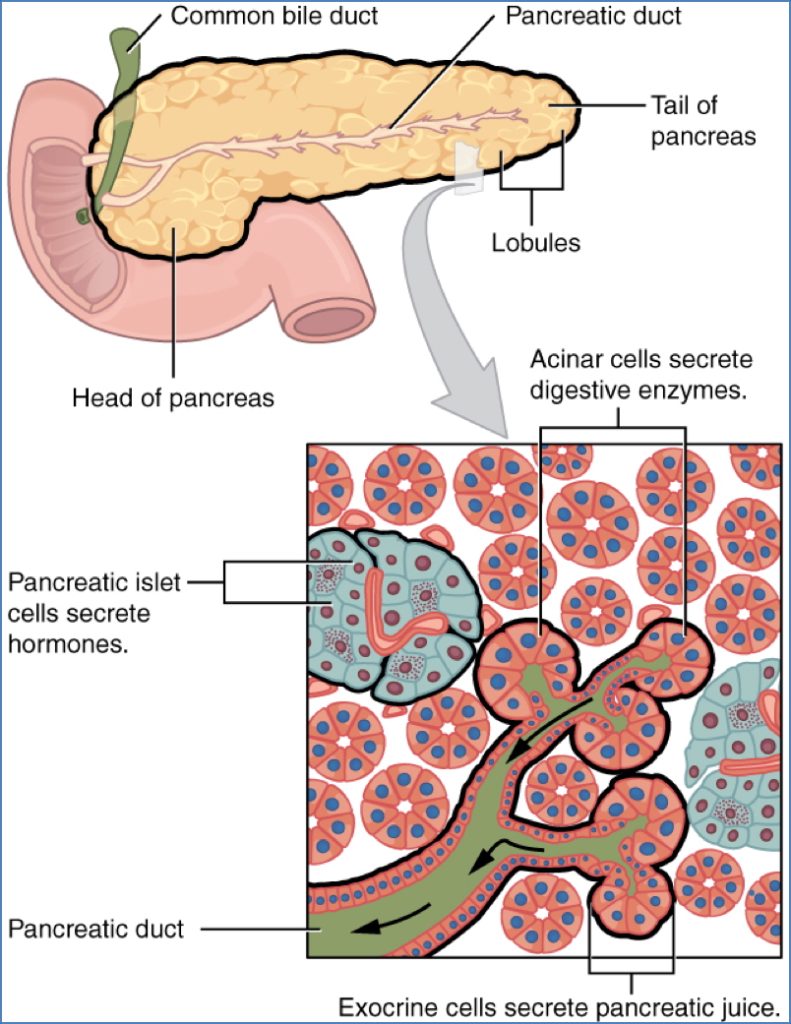
Intestine & Colon – Crypts of Lieberkühn
- Paneth Cells: Defensins & lysozyme (antimicrobial)
- Stem Cells: Regenerate gut epithelium
- Goblet Cells: Secrete mucus
- Enterocytes: Secrete alkaline intestinal fluid
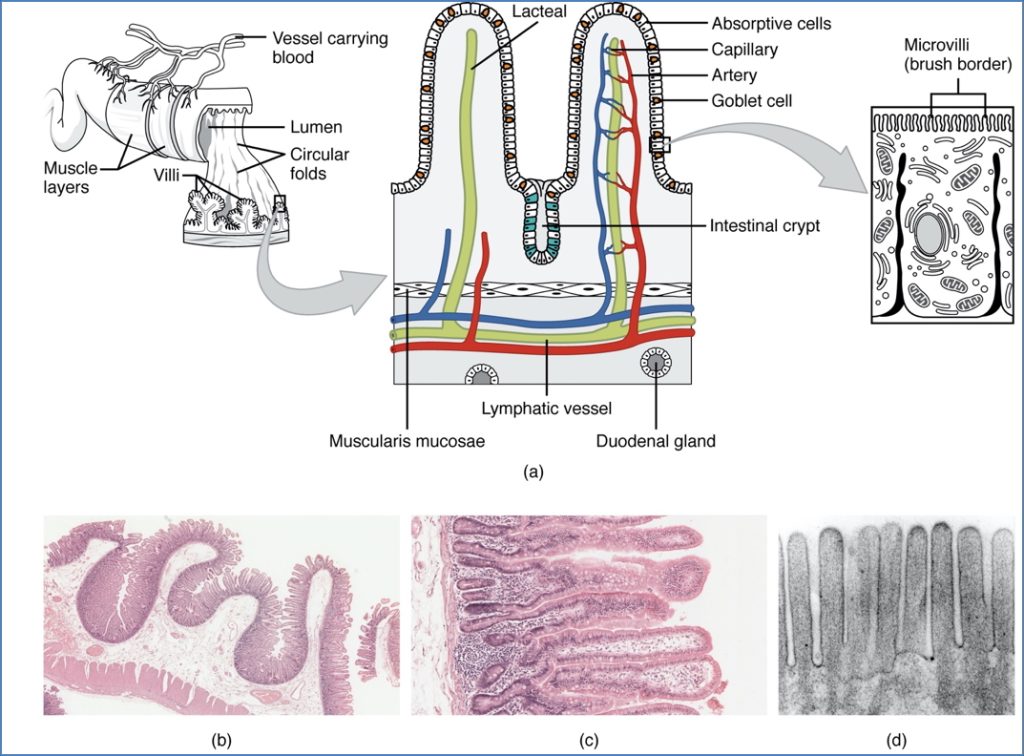
Mechanisms of Secretion
Protein Secretion (e.g. mucin)
- Translation by ribosomes → RER → Golgi apparatus
- Vesicle trafficking to apical surface
- Exocytosis into lumen
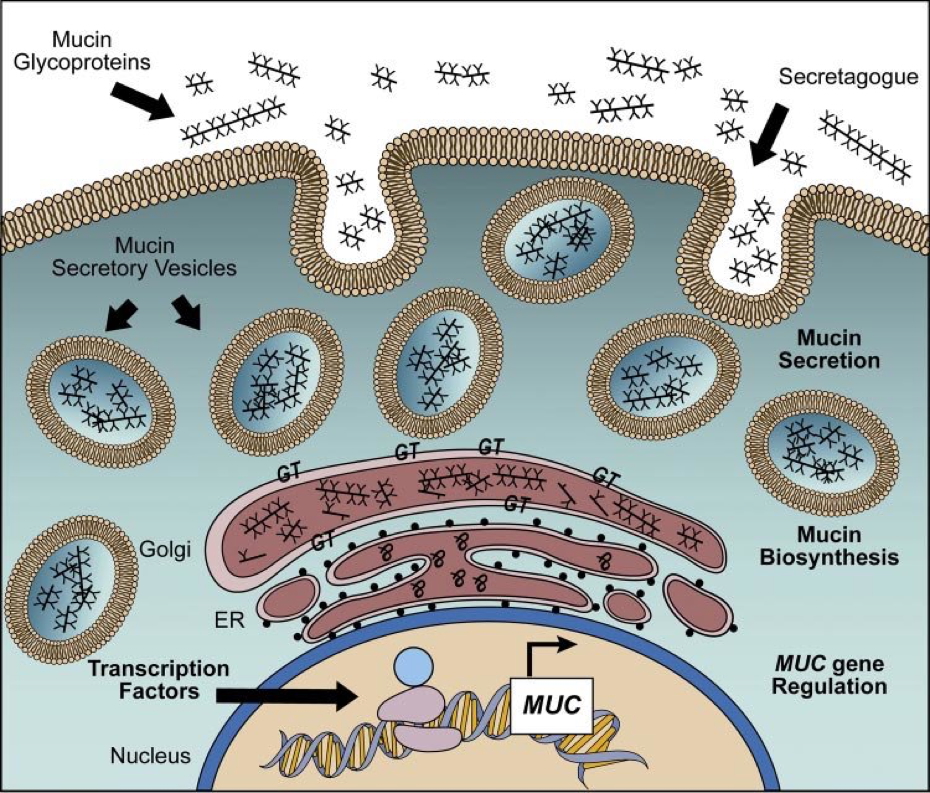
Ion Transport
- Na/K ATPase: Sets up electrochemical gradient
- Na/Cl/K Cotransporters and ion channels regulate secretion
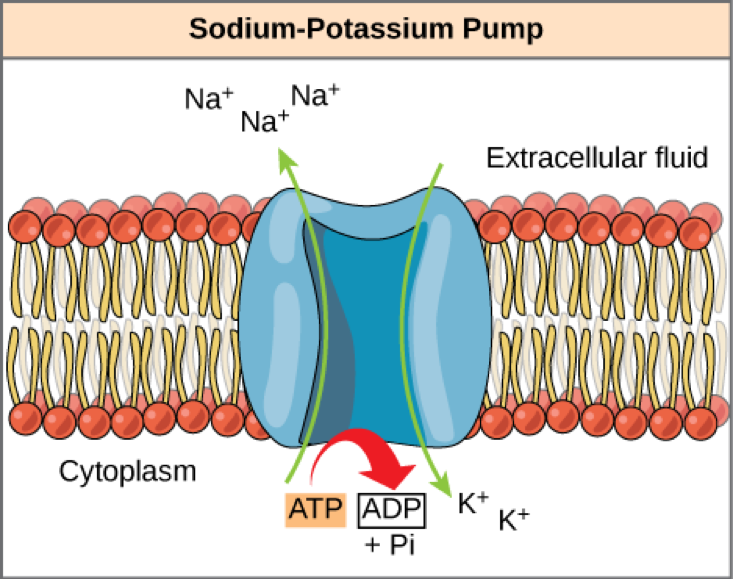
Water Transport
- Follows ion gradients via osmosis
- Mediated by aquaporins
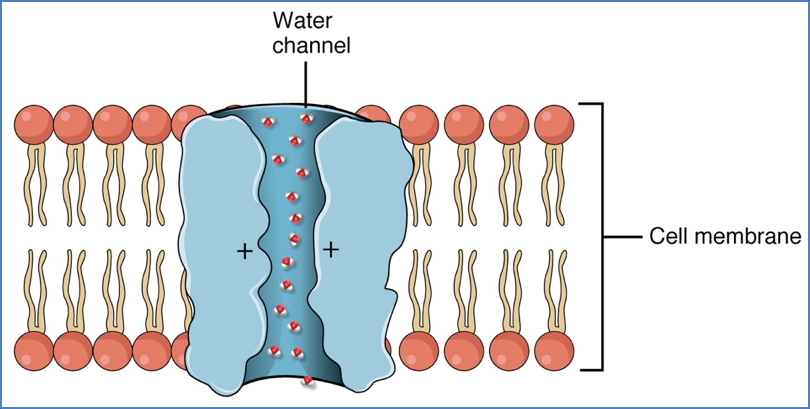
Specialised Examples
Fluid Secretion (e.g. saliva, pancreatic juice)
- Na/Cl/K cotransport → Cl- enters acinar cells
- Cl- secreted into lumen, Na+ follows
- Water follows ions via osmosis → through aquaporins
- Ions are partially reabsorbed downstream; water is not
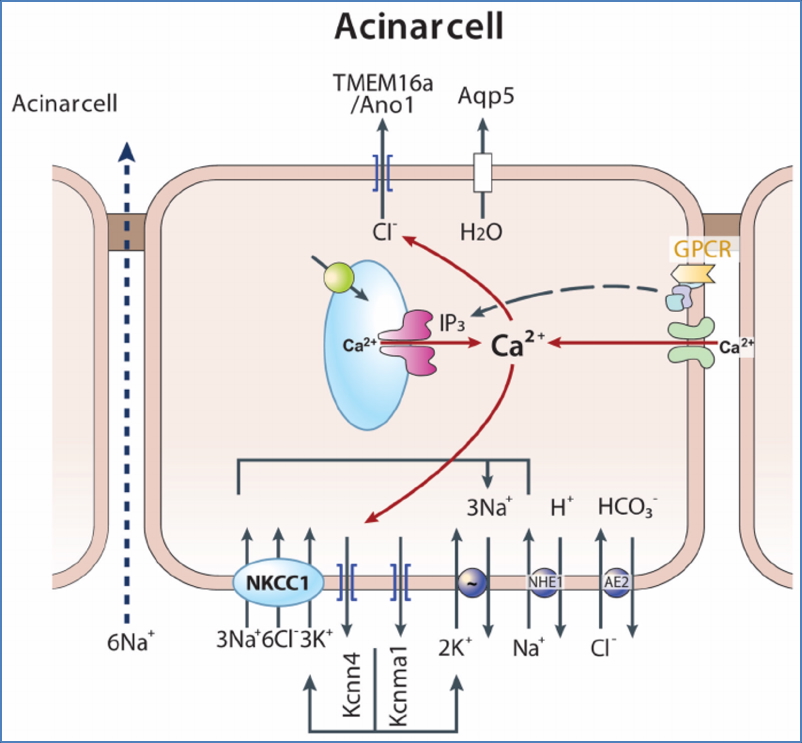
https://www.researchgate.net/figure/A-model-depicting-the-mechanism-of-acinar-cells-fluid-and-electrolyte-secretion_fig2_221799618
Bicarbonate Secretion (Pancreatic Ducts, Brunner’s Glands, Bile Ducts)
- CO₂ enters cells and reacts with H₂O (carbonic anhydrase)
- Forms H₂CO₃ → dissociates into H⁺ and HCO₃⁻
- H⁺ expelled via Na⁺/H⁺ antiporter
- HCO₃⁻ secreted into lumen via ion channels
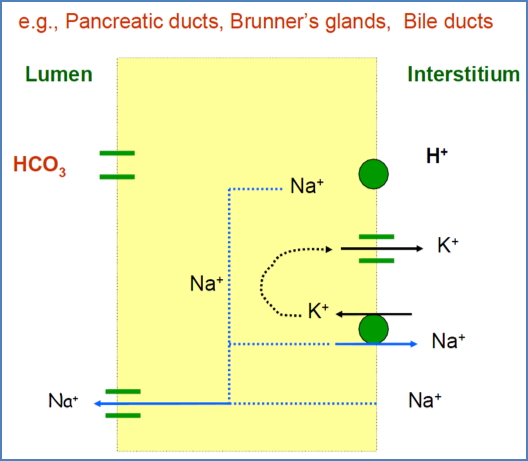
Acid Secretion (Parietal Cells)
- Stimulated by: Acetylcholine, Gastrin, Histamine
- Mechanism:
- Carbonic anhydrase generates H⁺
- H⁺ secreted into lumen by H⁺/K⁺ ATPase
- Cl⁻ enters via HCO₃⁻/Cl⁻ antiporter
- Inhibited by:
- Somatostatin (endocrine/paracrine)
- Pharmacological agents:
- Omeprazole: PPI – inhibits H⁺/K⁺ ATPase
- Ranitidine: H2 receptor blocker – inhibits histamine signalling
- Pentagastrin: Gastrin analogue – stimulates acid
- Caffeine: Inhibits phosphodiesterase → ↑cAMP

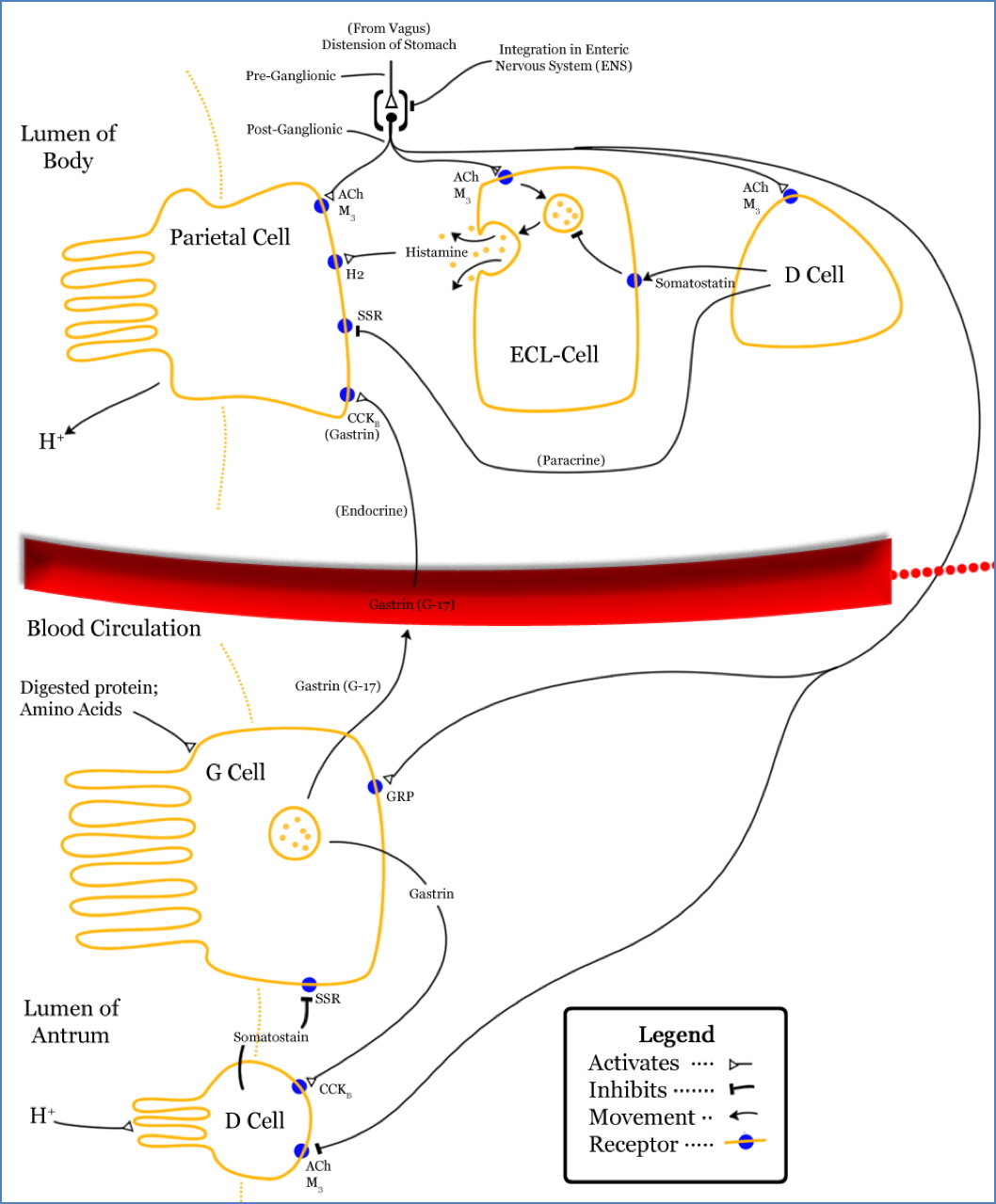
Summary – Gastrointestinal Secretions
Gastrointestinal secretions support digestion, lubrication, pH balance, and immune defence. They arise from salivary glands, the stomach, liver, pancreas, and intestinal crypts, involving both fluid and biochemical products. Secretion mechanisms include protein trafficking, ion pumping, and osmotically driven water transport. For a broader context, see our Gastrointestinal Overview page.